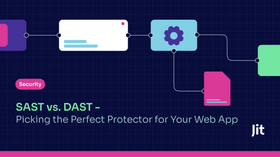The Top 5 Free Vulnerability Scanners of 2025
Vulnerability scanners are useful tools to proactively surface and remediate security issues. Compare the top free vulnerability scanners below.
Updated April 16, 2025.

Free vulnerability scanners are a great way to begin scanning your cloud applications and infrastructure for security issues, and proactively resolving vulnerabilities before attackers can find them.
These tools can be implemented at every stage of the SDLC, from code planning to production, depending on your preferences and objectives. As a domain, vulnerability scanners cover use cases such as code scanning, dependency reviews, and secret detection. They can analyze code statically in repos or dynamically in runtime.
Let's dive into the factors to consider when choosing a vulnerability scanner, before reviewing our top five suggestions.
How to choose a vulnerability scanner
When securing your SDLC, choosing a vulnerability scanner will be among your first steps.
At its core, vulnerability scanners aim to ensure that applications and cloud infrastructure are built, maintained, and updated in a manner that shields them from malicious attacks and security breaches.
That said, there are some specific factors to consider when narrowing your decision.
- What phase of the tech stack are you looking to secure? Generally speaking, those looking to surface vulnerabilities in the code they write should look at SAST, secrets detection, and DAST tools. Use SCA and SBOM tools to ensure you're using secure open source components. Consider container scanning tools if you're looking to scan Dockerfiles, container registries, or containers in runtime. And finally, evaluate IaC scanning tools and CSPM tools to surface cloud security misconfigurations.
- Where do you want to integrate vulnerability scanning? Many security and engineering teams are looking to shift security left in the SDLC. Consider SAST, secrets detection, and SCA tools to find vulnerabilities early. You can also shift left your cloud security scanning with IaC security. CSPM and DAST can only be integrated later on in the SDLC.
- What is your tolerance for false positives? Generally speaking, tools that analyze code statically will have a higher false positive rate, because they don't understand the runtime context to determine whether a real vulnerability exists in production. Vulnerability scanners that scan the runtime environment tend to have a lower false positive rate.
- Do you have any compliance requirements? Many security compliance requirements will include application security and cloud infrastructure security practices. Use the vulnerability scanner overviews below to map toolsets to these compliance requirements.
Deep Dive Into the Top 5 Free Vulnerability Scanners
Since we're reviewing free vulnerability scanners, let's review the top open source application and security tools out there to proactively identify and remediation vulnerabilities.
Leveraging Jit for Application and Cloud Security
Free vulnerability scanners are a great way to get started with SDLC security. However, using multiple scanners can be difficult to integrate maintain, and require developers to context switch when analyzing vulnerabilities.
If you're looking for a simpler solution that developers can easily adopt, consider Jit's Open ASPM Platform, which empowers developers to integrate security seamlessly into every stage of the development process with a unique developer UX that is easy to adopt.
Jit offers a complete suite of tools specifically tailored to enhance application and cloud security throughout the Software Development Lifecycle. It covers SAST, SCA, secrets detection, IaC scanning, CSPM, DAST, and CI/CD security, which can be rolled out across repos in minutes.





